October 25-26, 2017
Museum of Florida History
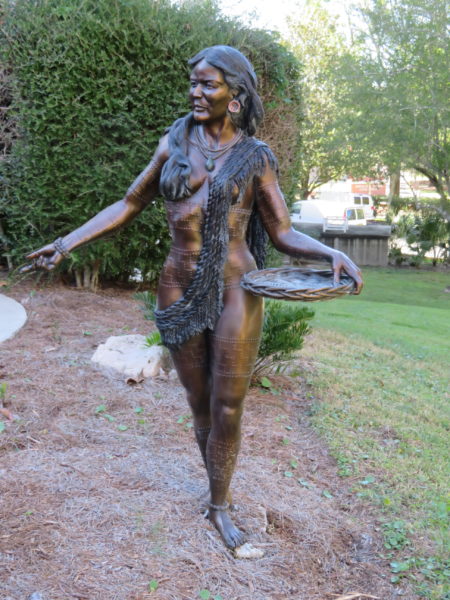 Bronze sculpture, Seminole woman, 1830
Bronze sculpture, Seminole woman, 1830
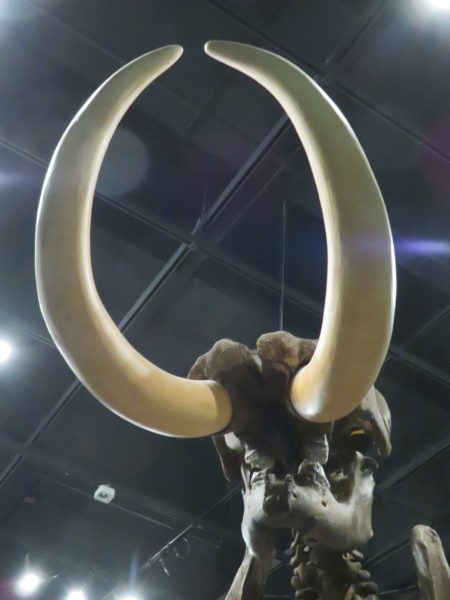 The mastadon whose skeleton is pictured above lived in Florida 65 million years after the dinosaurs became extinct. Florida was under water when the dinosaurs roamed the earth.
The mastadon whose skeleton is pictured above lived in Florida 65 million years after the dinosaurs became extinct. Florida was under water when the dinosaurs roamed the earth.
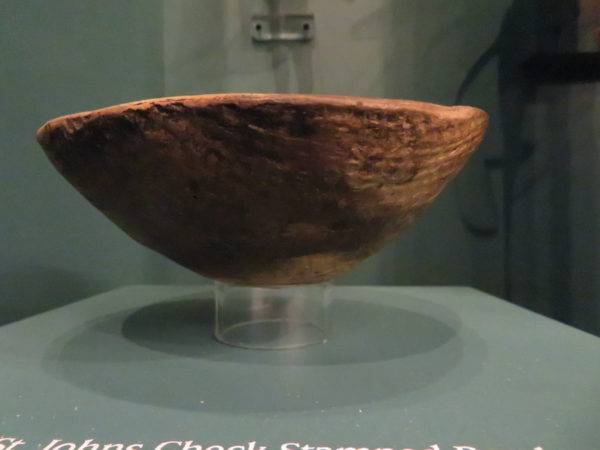 The bowl pictured above is a style that’s unique to Florida. It contains microscopic bits of freshwater sponge giving the finished product a chalky feel. The design on the outside is stamped. Pots like this were made as far back as 2,500 years ago.
The bowl pictured above is a style that’s unique to Florida. It contains microscopic bits of freshwater sponge giving the finished product a chalky feel. The design on the outside is stamped. Pots like this were made as far back as 2,500 years ago.
On Tallahassee Streets
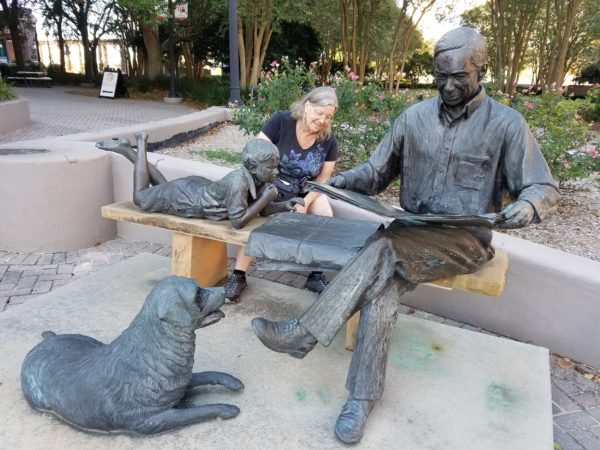 Jane reads the paper with some new friends at Kleman Plaza.
Jane reads the paper with some new friends at Kleman Plaza.
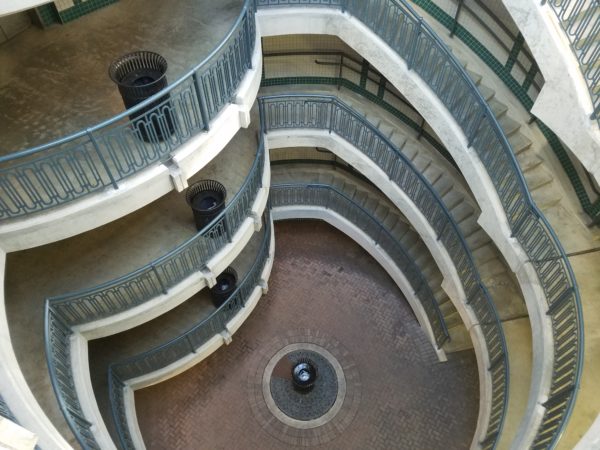 Nautilus-like stairs to the parking garage in Kleman Plaza.
Nautilus-like stairs to the parking garage in Kleman Plaza.
St. Mark’s National Wildlife Refuge
We visited the area of the the Refuge’s 70,000 acres that is primarily pine flatwoods, impoundments, swamps and marshes. We were welcomed first by staff and volunteers in the Visitors Center and then by this guy in the pond out back.
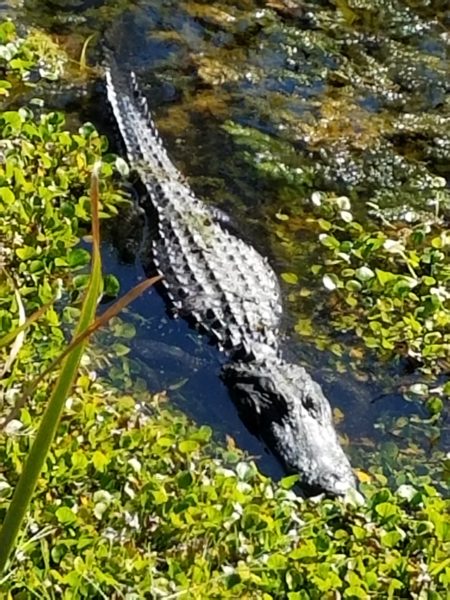 [Alligator-phobic friends can relax knowing we were on a boardwalk.]
[Alligator-phobic friends can relax knowing we were on a boardwalk.]
We returned to the car and drove the seven miles to the Gulf of Mexico, passing through the various habitats.
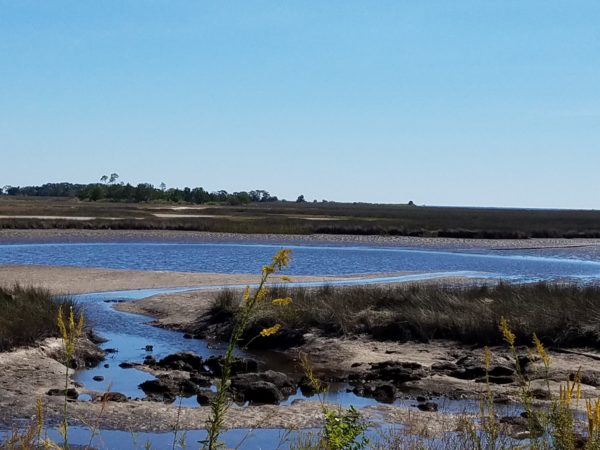 Salt was produced in impoundment areas like these during the Civil War.
Salt was produced in impoundment areas like these during the Civil War.
This scarlet flycatcher wouldn’t stay close enough for an in-focus shot, but we were awed by its brilliant red.
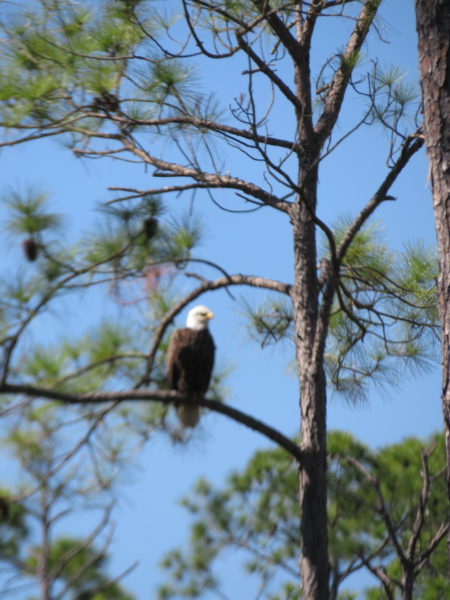 This bald eagle perched in a pine was close enough to admire but was also out of good-focus range.
This bald eagle perched in a pine was close enough to admire but was also out of good-focus range.
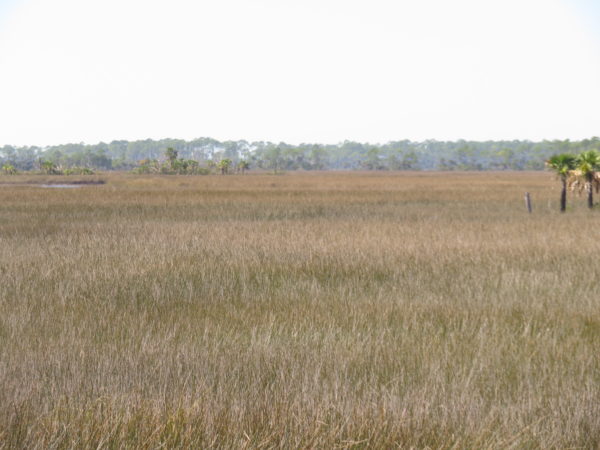 Black needle rush
Black needle rush
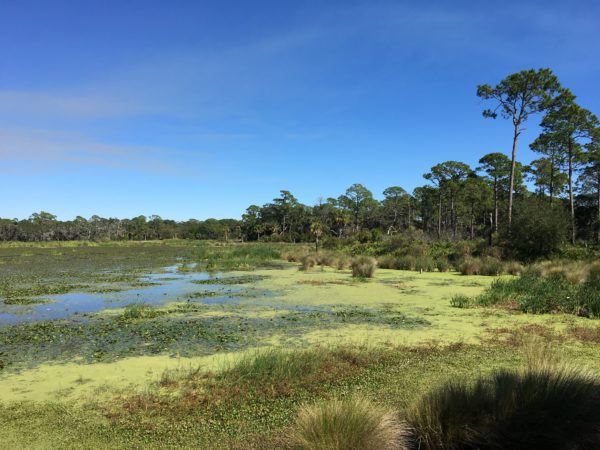 Swamp
Swamp
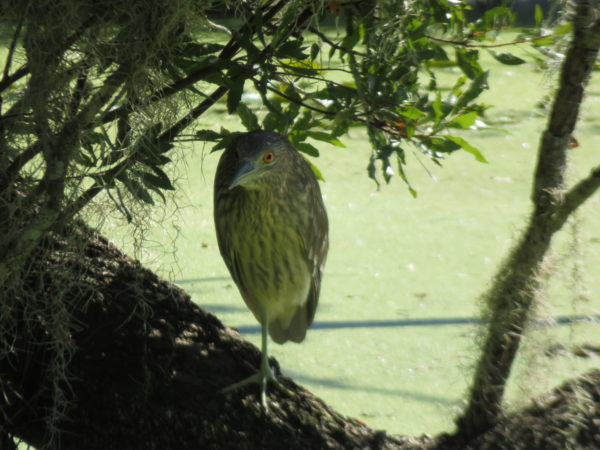 Green heron
Green heron
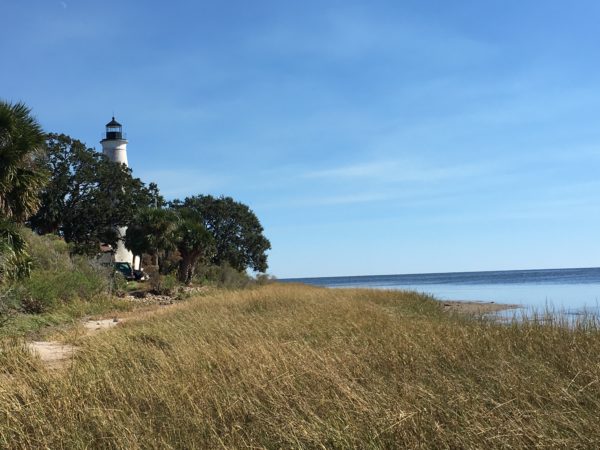 The original St. Marks Lighthouse was built in 1830 and was replaced in 1831 and 1842. It has withstood hurricanes and shelling by Union naval forces during the Civil War.
The original St. Marks Lighthouse was built in 1830 and was replaced in 1831 and 1842. It has withstood hurricanes and shelling by Union naval forces during the Civil War.
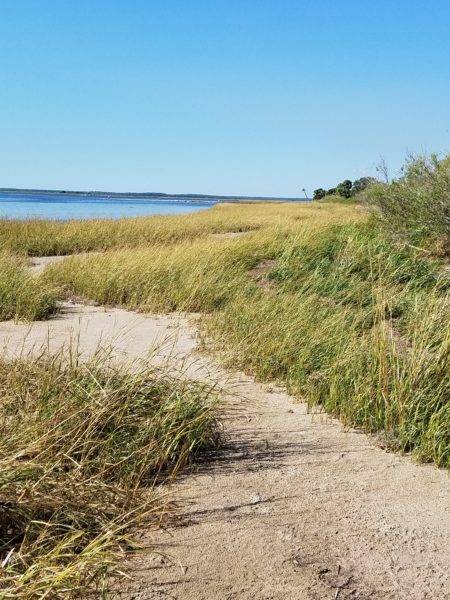 Dunes
Dunes
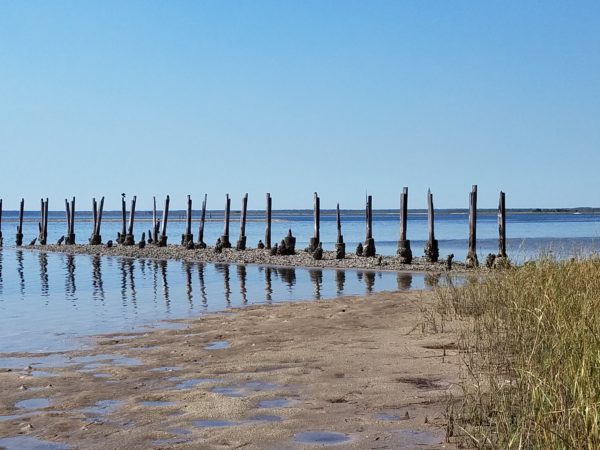 Pilings
Pilings
Tallahassee RV Park
Before the neighbors arrived
After the neighbors settled in. The Park was full every night of our stay and had no availability every weekend through football season.
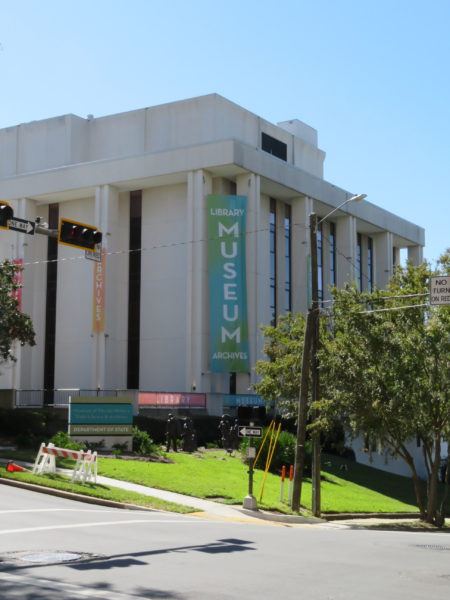
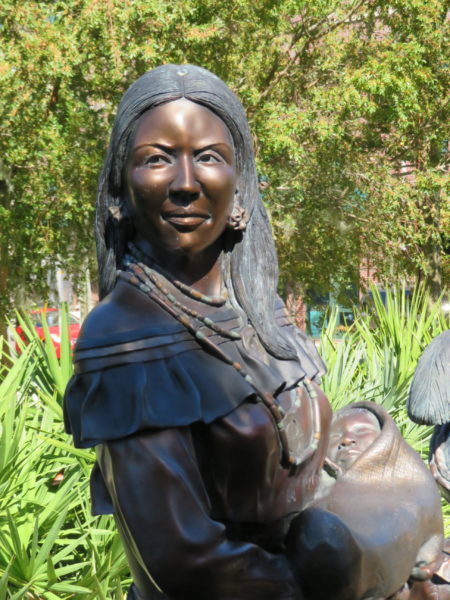
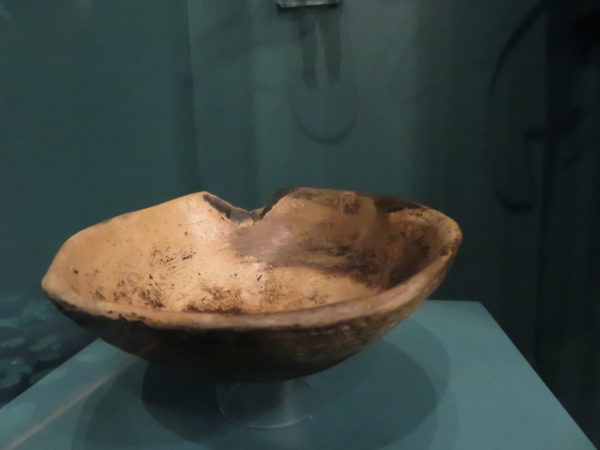
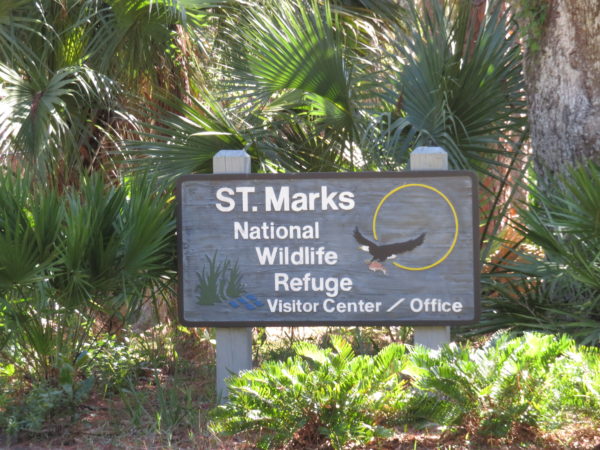
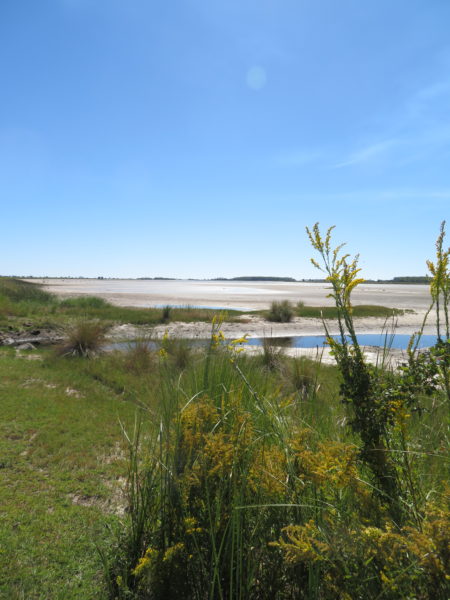
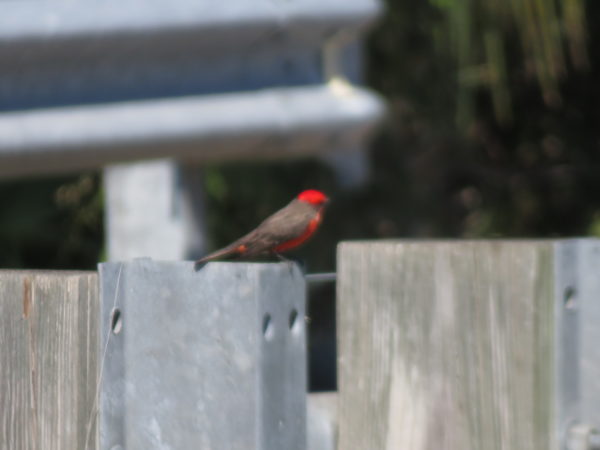
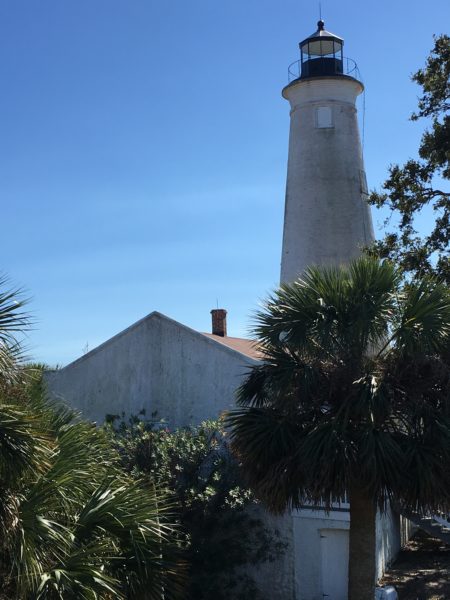
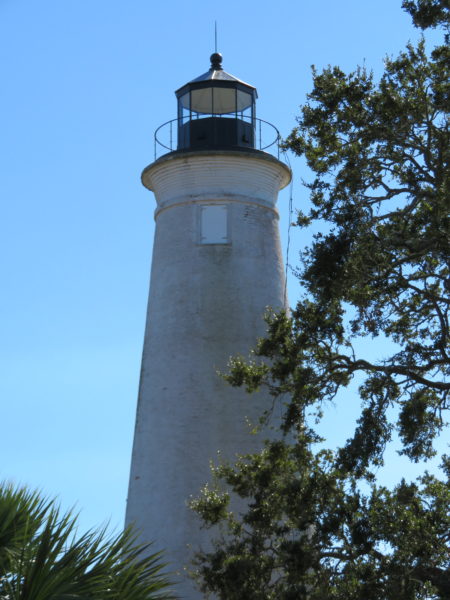
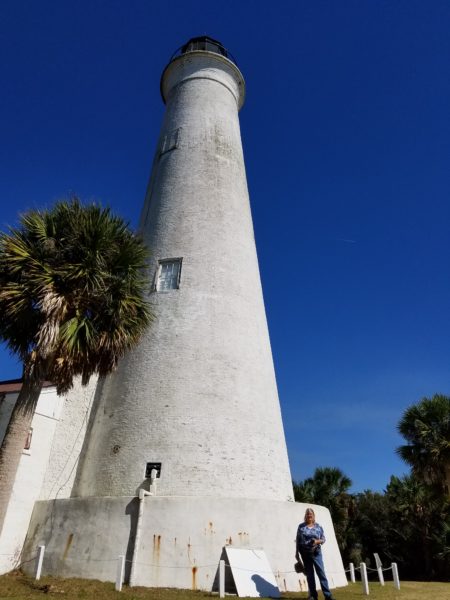
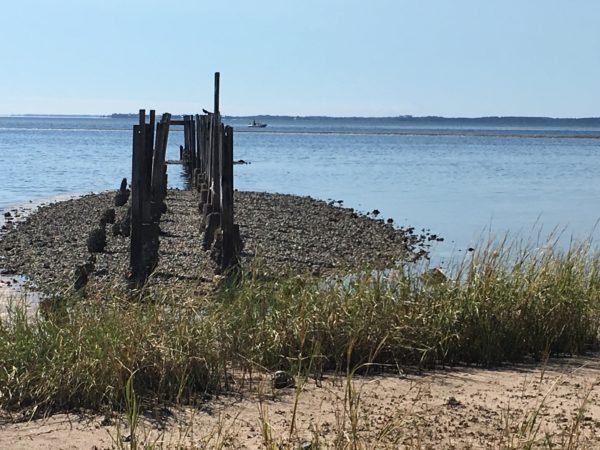
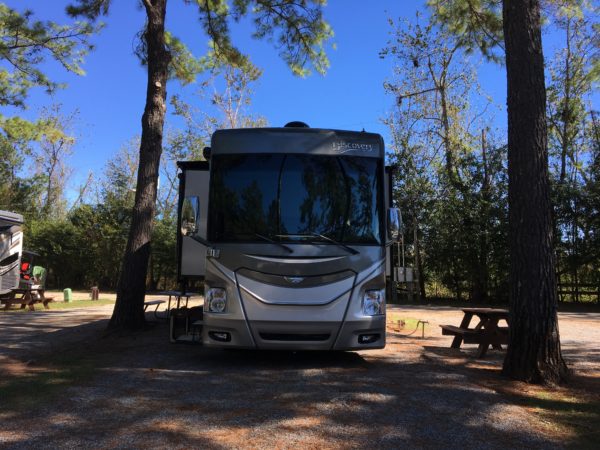
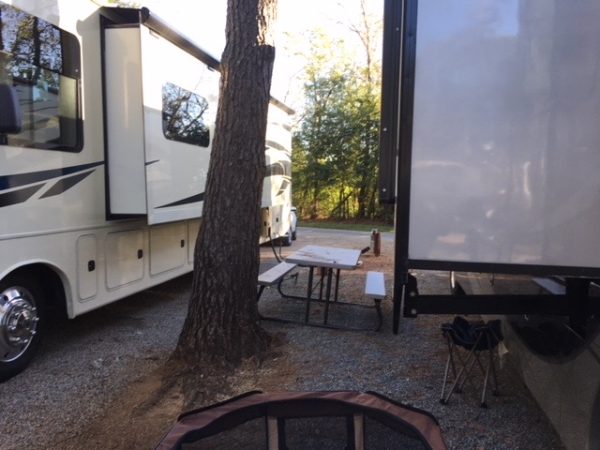
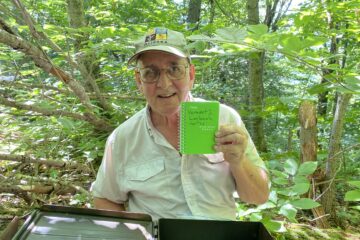
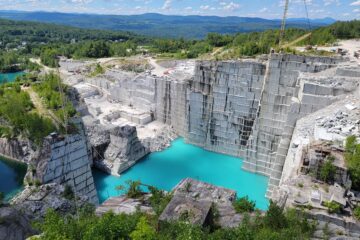
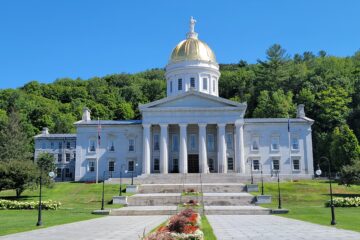
1 Comment
susan · December 9, 2017 at 9:32 pm
You are having too much fun….LOL